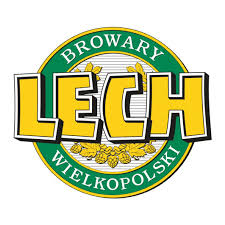I’ve heard multiple times that it’s not okay to allow any food to go down the drain even with a garbage disposal, I guess because solids shouldn’t go down the drain. But we put a shit ton of solids down the drain through the toilet and that seems to be fine. Does the toilet go to a different sewage pipe then the sink? Or does shit have different properties that make it dissolve better?
The type of food that’s the worst for pipes is fats, oils, and grease. You should never put any of these down a pipe because they can solidify and cause pipes to burst. Restaurants are required by law to have a grease trap for any grease that inadvertently goes down to minimize the damage.
The occasional vegetable scraps going down a residential garbage disposal will not pose a huge problem, but keep out any fats, oils, or grease.
Kitchen sink pipes are usually smaller more delicate than WC pipes. Most people throw food in their sinks, not their WC. All stuff ends in the same place, but the first pipes where stuff goes are different from each other
Shit dissolves better. Food (generally) has more fats and oils that will stick and clog the pipes…
It’s the same pipe.
Speaking for your shit. I’m sure these some fat grease shit out the sticking and evolving in some pipes.
Combined with wet wipes, it transforms to Fatbergs. I really recommend the chapter about “Notable fatbergs”
Thanks for tonight’s bedtime Wikipedia article.
“The most notable Fatberg is Lord Eustace Fatberg IV. Lord Eustace had no hobbies as he was a non-sentient amalgam of human waste, wet wipes and fat lodged in a sewer.”
At 1600 Pennsylvania Avenue NW
Aside from what others have pointed out about solubility, sink drains, as I understand it, have a narrower pipe than toilet drains do, though once it gets out of the house it all goes through the same pipe either way, but I think that’s a larger pipe than what’s in the house.
I’d also point out that the toilet pipe is significantly larger than than the kitchen pipe, and uses a multi-gallon, siphon-powered flush to help move it along. Your kitchen sink has none of these plumbing advantages. If you wanted to have a 3 inch kitchen drain and some kind of powered flush apparatus you might have a better time with food waste, but it’s still probably not a good idea for the reasons other people have mentioned. A normal kitchen sink drain configuration, even with the assistance of a disposal, is still quite ill-equipped to handle that kind and quantity of waste.
So don’t poop in the kitchen sink. Got it!
It’s ok to shit in someone else’s, just not yours.
3 inch pipe? I saw that movie… well parts
It’s mostly because of fatty foods. The fats/oils tend to solidify in the colder temperatures of sewage lines, ultimately causing clogged lines.
Our waste though has generally digested a large amount of that fat, whether it gets built up on your belly and ass or whether a lot of it gets expelled in the sweat.
Edit: Also, ideally, bacteria helps a lot with breaking down human waste and toilet paper, making the waste easier to flow through the pipes.
Just wanna point out that dietary fat is not the same as body fat. You aren’t made of walnuts, so walnut fat doesn’t go straight to your belly. Just about all fat gets digested and converted into sugar, put in your bloodstream, and then, if there’s excess, converted into body fat. To leave your body, it then gets converted back into sugar, gets used as energy, and then the CO2 goes back into your blood and exhaled. Sweating more doesn’t cause fat loss, just water weight loss, and people losing weight aren’t expelling it out by ass.
Solid waste volume has surprisingly little to do with the actual food you eat. It’s primarily dead bacteria, 50-70% by volume. While some food makes it through, it’s mostly the nondigestable things full of fiber. And capsaicin.
Just about all fat gets digested and converted into sugar
This is not how lipids are metabolized. They are not converted to glucose right off the bat. Fats are broken down to monoglycerides to be absorbed, recombined to triglycerides and eventually chylomicrons, and transported to adipose tissue.
The diameter of the pipes from a toilet ate large enough to accommodate any poop that goes thru a toilet.
The diameter of the pipes from a sink often get very very small, which is why if you let a sink run long enough it may start to back up. But they have a large drain hole so they can drain fast.
For garbage disposals they’re usually fine unless you have a septic tank.
But the big problem is grease/fat. It’s liquid with hot water, but will solidly later and water builds up insulating the fat/grease so it remains a solid. When George Foreman grills were big lots of people fucked up their plumbing by always dumping the grease.
Yeah, grease is a big deal. After things like bacon, drain the fat into the trash (or into a bowl and later the trash), then wash in the sink. This minimizes how much grease is entering your pipes and thus vastly reducing the need to unclog your pipes.
It’s either Japan or Korea, I can’t remember.
But they have a powder that you sprinkle a little on used cooking grease. And it solidifies into a non sticky plastic like chunk that’s easy to dispose of in the trash.
But bacon grease? Chile just put that in a mason jar, you don’t waste bacon fat…
It’s not unique to Japan/Korea, you can definitely get it in the US. Fryaway is at least one brand of it, but I’d be shocked if you couldn’t get others.
Food is fine to go down garbage disposals, that’s the point of them. Just don’t put eggshells in them because the sediment they create is heavy and sits in your P-trap.
What’s the point of a garbage disposal if you can’t put food in there? You don’t need that to make liquids go down the drain.
It depends on your plumbing. If your sink’s waste pipe is large enough, and has enough slope, and you put enough water down the drain to wash all the solids through the pipe, then you can certainly put food down the sink drain.
In my house the kitchen sink’s waste pipe is smaller than what the toilets use. And it makes a long, minimally-sloped run to the main sewer connection. That pipe will clog in a hurry if I put food down the kitchen sink drain.
Are you flushing your food down the toilet?
When I’m done with it, yes.
No idea about clogging differences, but the toilet drain sometimes goes to a different sewer system than the sink drain. https://en.wikipedia.org/wiki/Sanitary_sewer
This doesn’t separate sink drains and toilet drains, it just prevents rainwater from diluting the sewage water. The water coming out of your sink is still considered sewage water.
Your link isn’t too helpful for what you’re describing.
All household wastewater (including kitchen) ultimately goes into the sanitary sewer in most places, if it comes out of a house it’s all called “sanitary”. The alternative to sanitary sewer is storm drain, which is intended ONLY for surface rainwater and usually never have any household hookups, except potentially from rain gutters on the roof or tile drainage below ground, but municipalities are often pretty strict about that as these systems are very important for managing stormwater and avoiding flash flooding.
The third option, which I think is what you’re getting at, is called graywater, and indeed you could have sinks and even showers plumbed into graywater drains, but never toilets, and it’s often clean enough or can be filtered so that it can be re-used for flushing toilets, irrigating lawns and gardens or other forms of non-potable re-use that won’t be bothered by things like soaps and lotions and bacteria and other things that might get rinsed off. This is common for RVs and boats and other situations where fresh water might be scarce, but very much less typical for household plumbing in most places in my experience, and there is rarely any municipal system hookup for it and the graywater is usually intended to be used on-site within the household plumbing system itself, but it can help divert or reduce wastewater into the sanitary sewer and can help reduce the use of clean potable water, so it is a good thing in general.







